Fresca / 2023
Overview
Collaborating with Not Impossible Labs, we developed Fresca to tackle food insecurity across North Carolina and beyond. Fresca partners with the Food Bank of Central and Eastern North Carolina to provide free food deliveries, catering to users' cultural backgrounds, dietary needs, and health restrictions. Through a website or mail, users can personalize their food selections via checklists and questionnaires. Fresca addresses transportation barriers by offering deliveries directly to homes or to partnered locker drop-off locations, ensuring a tailored experience without compromising users' individuality.
By providing a tailored food selection process, the project empowers users to make choices that best fit their dietary needs and preferences. This approach not only improves accessibility to a diverse range of food options but also respects and supports individual autonomy in food choice. Through the partnership with the Food Bank of Central and Eastern North Carolina, the service ensures that these personalized food selections are distributed free of charge, further breaking down barriers to access.
Project Objectives
My Role
I conducted preliminary research and interviews to gather important insights and data that shaped the project. I also took the lead on branding and visual identity, which involved creating the project's overall look and feel. This included designing the logo, choosing the color scheme, and developing other visual elements to ensure that the project's identity is cohesive, appealing, and clearly communicates our mission and values.
Brand Book
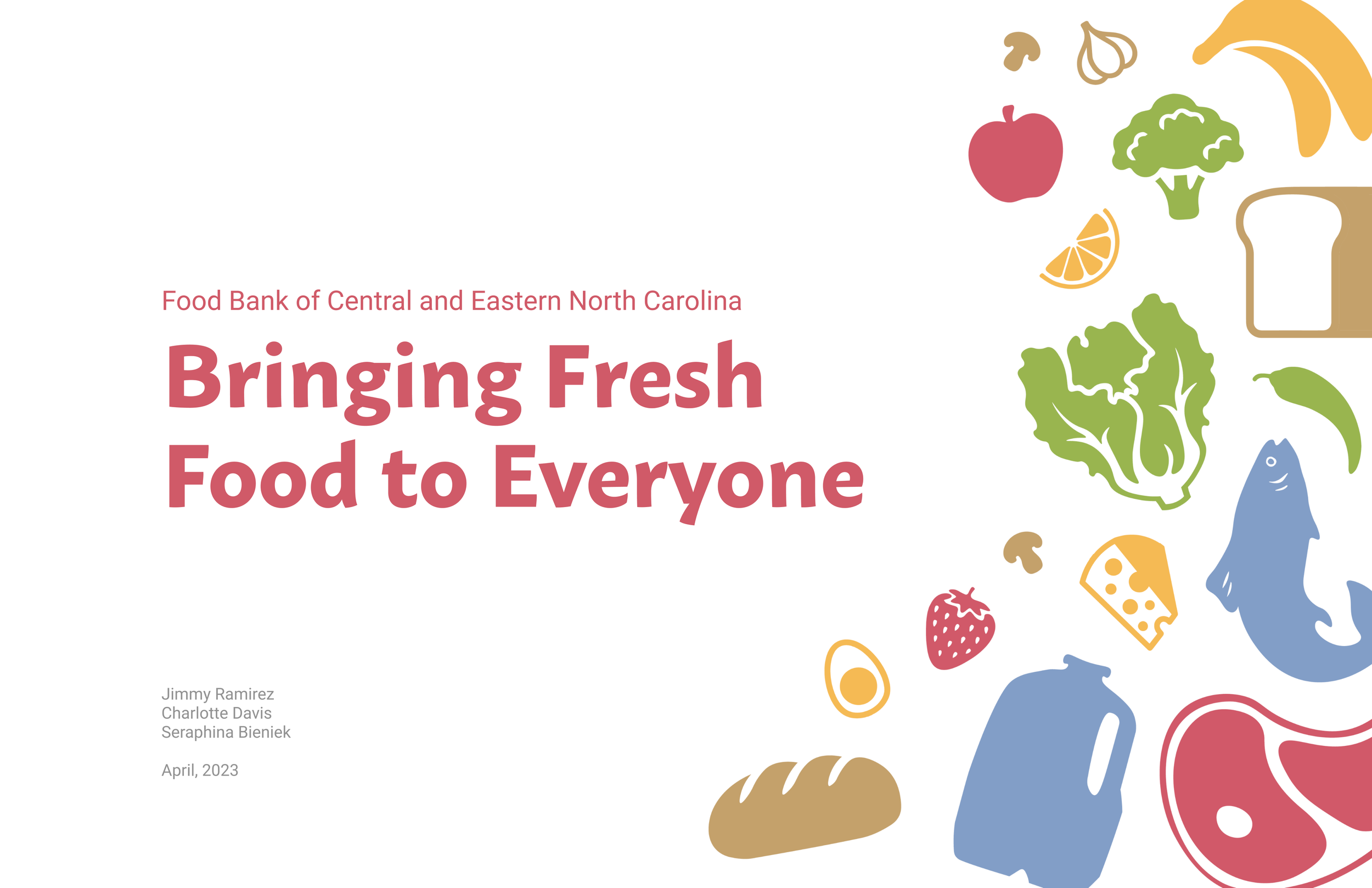


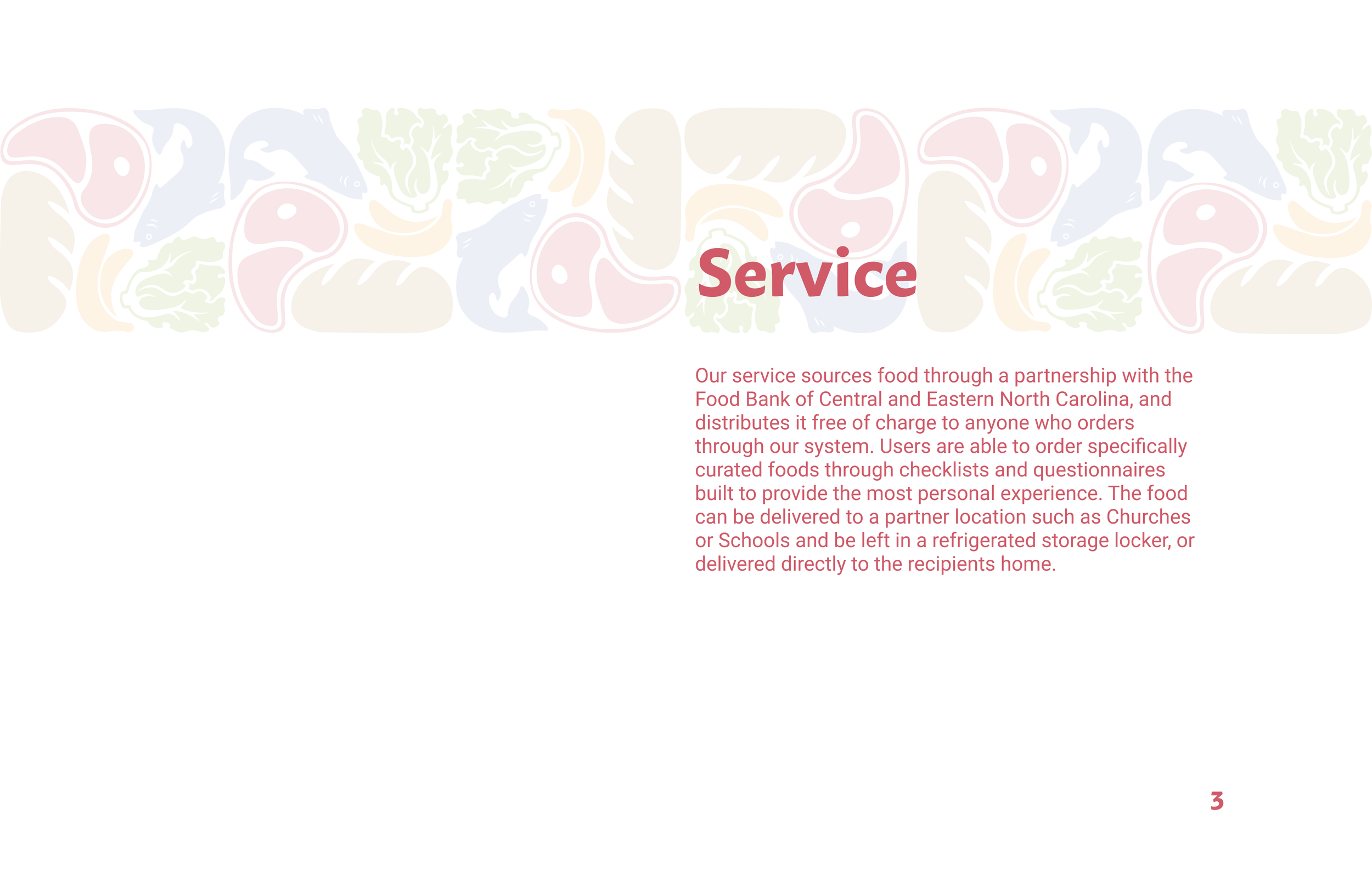
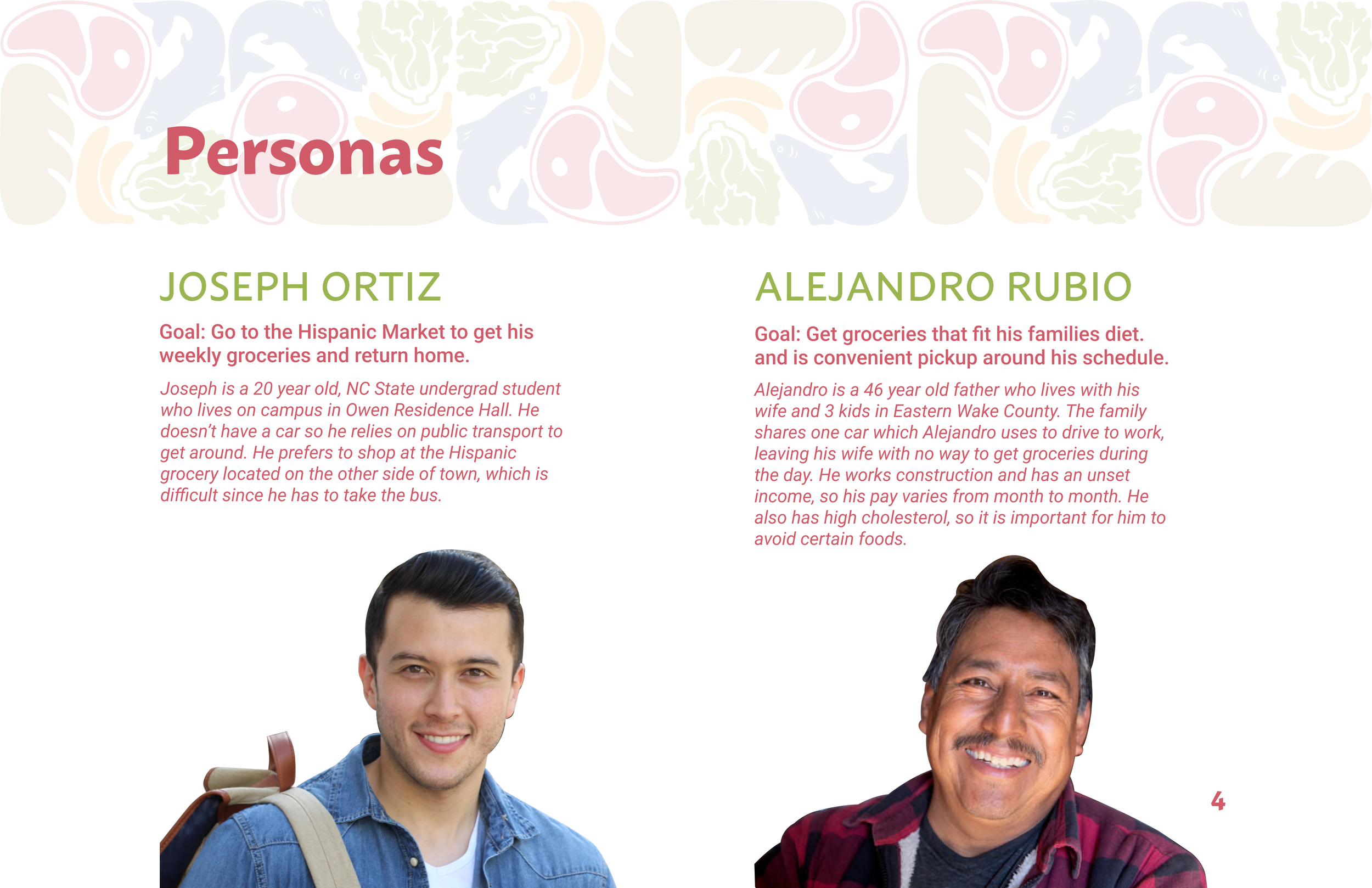
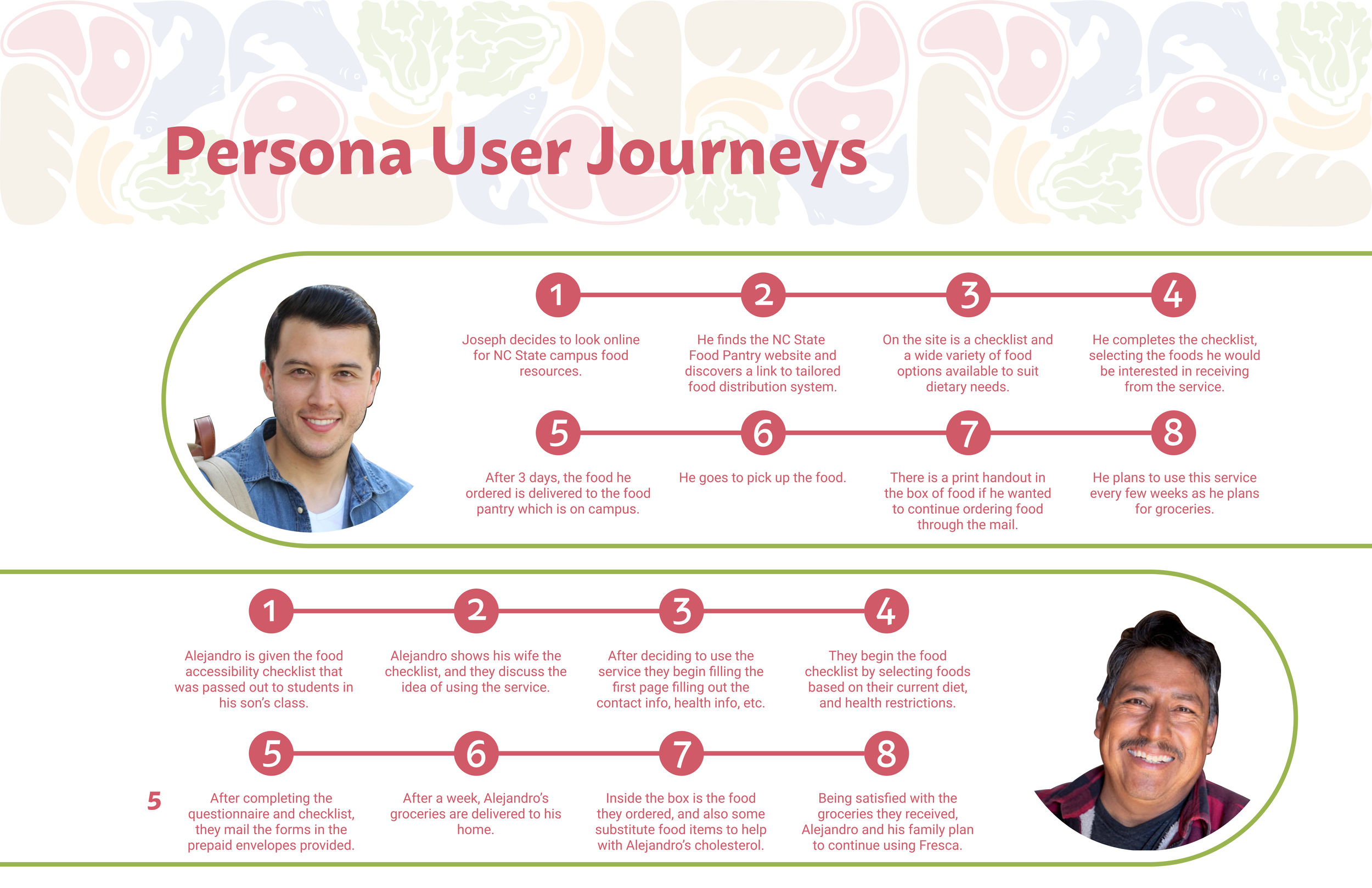
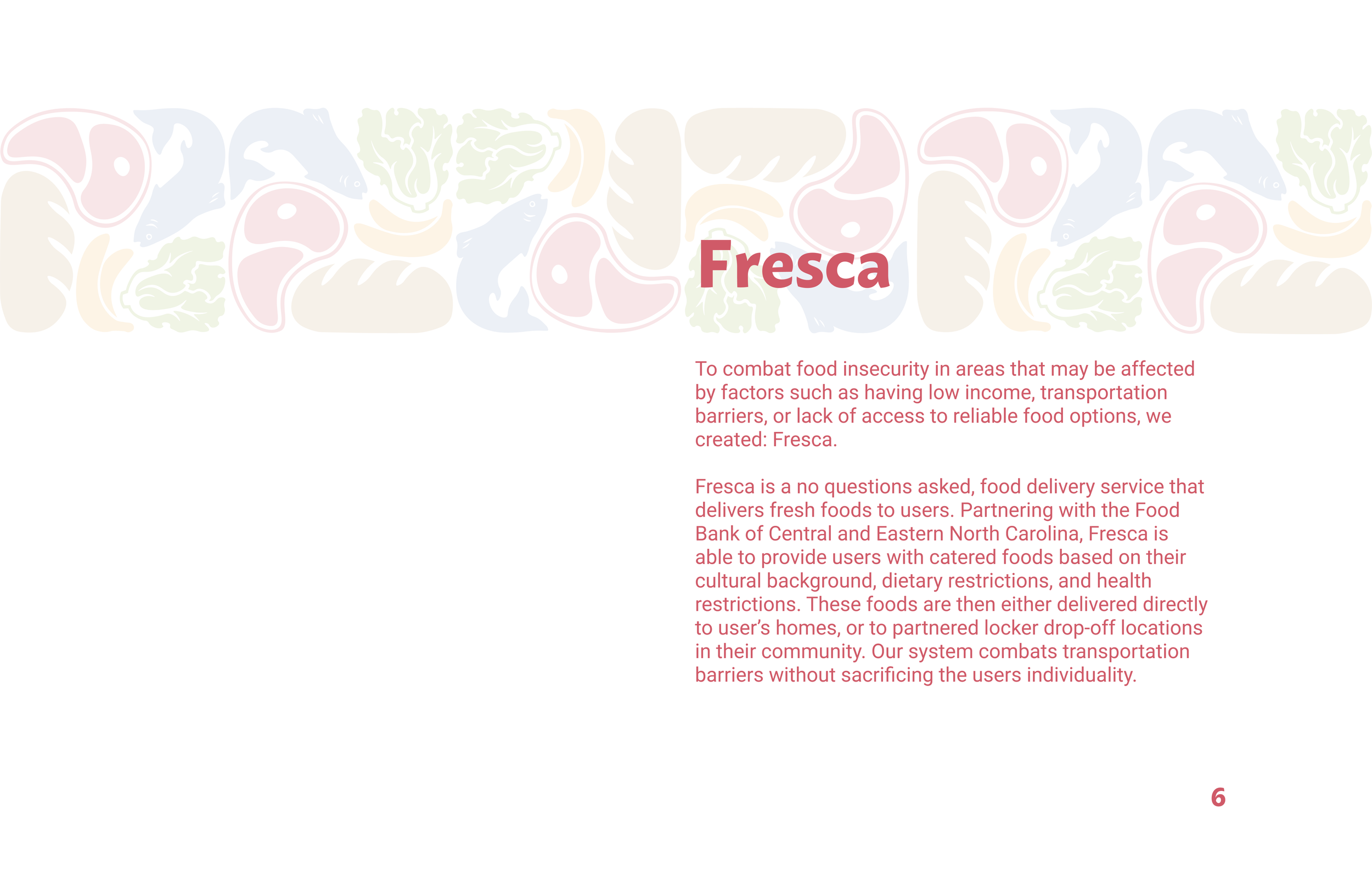
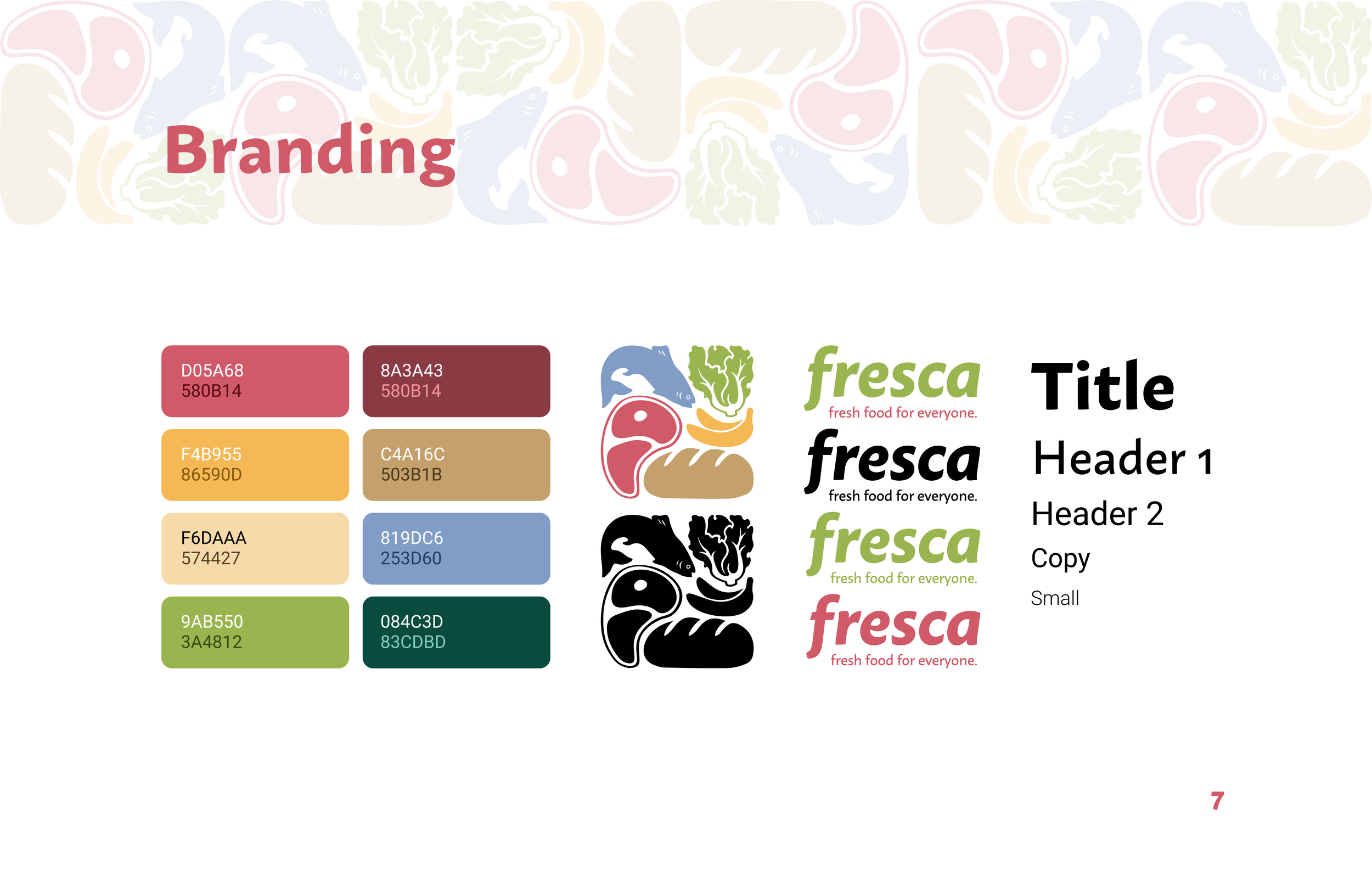
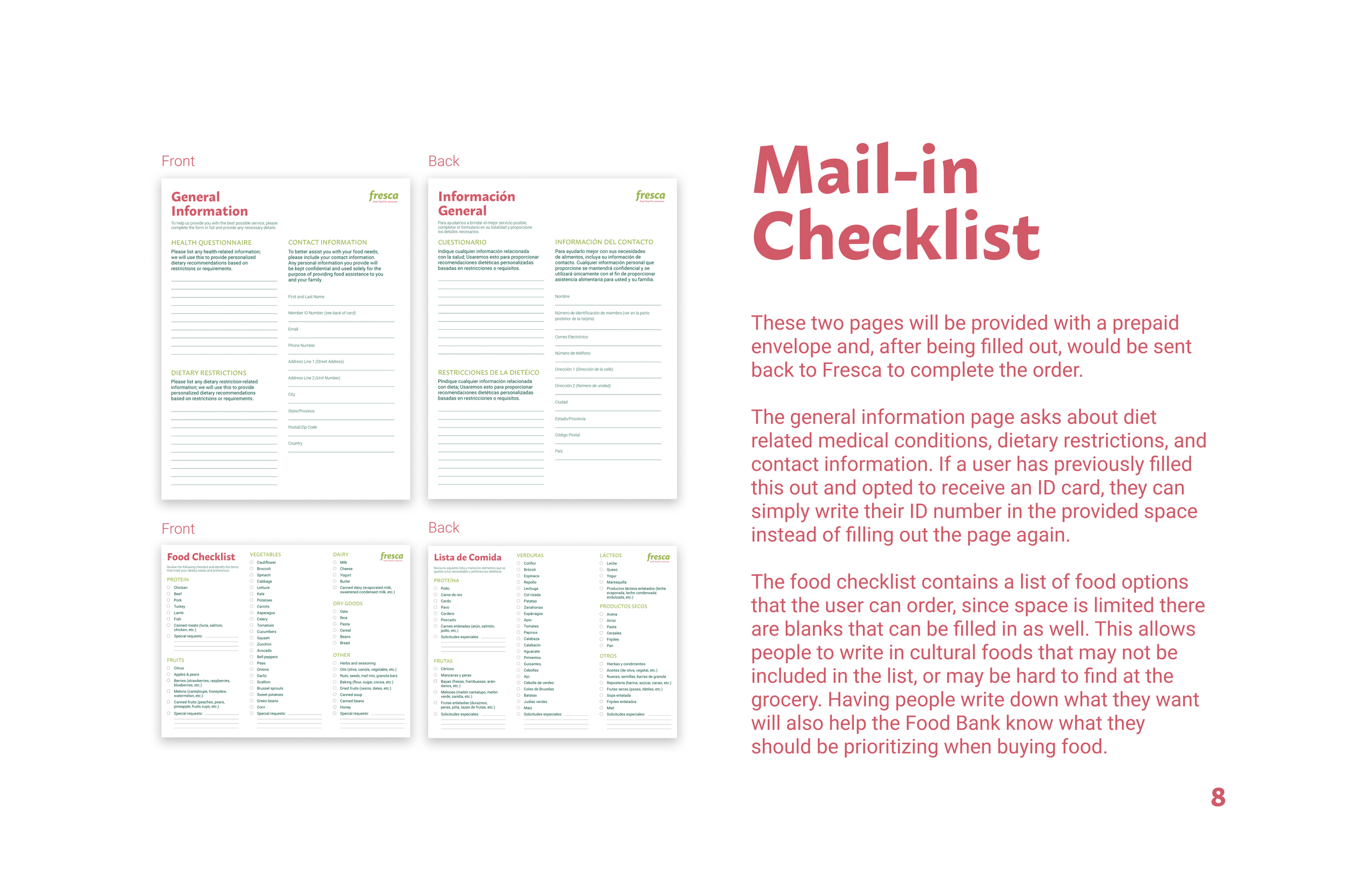
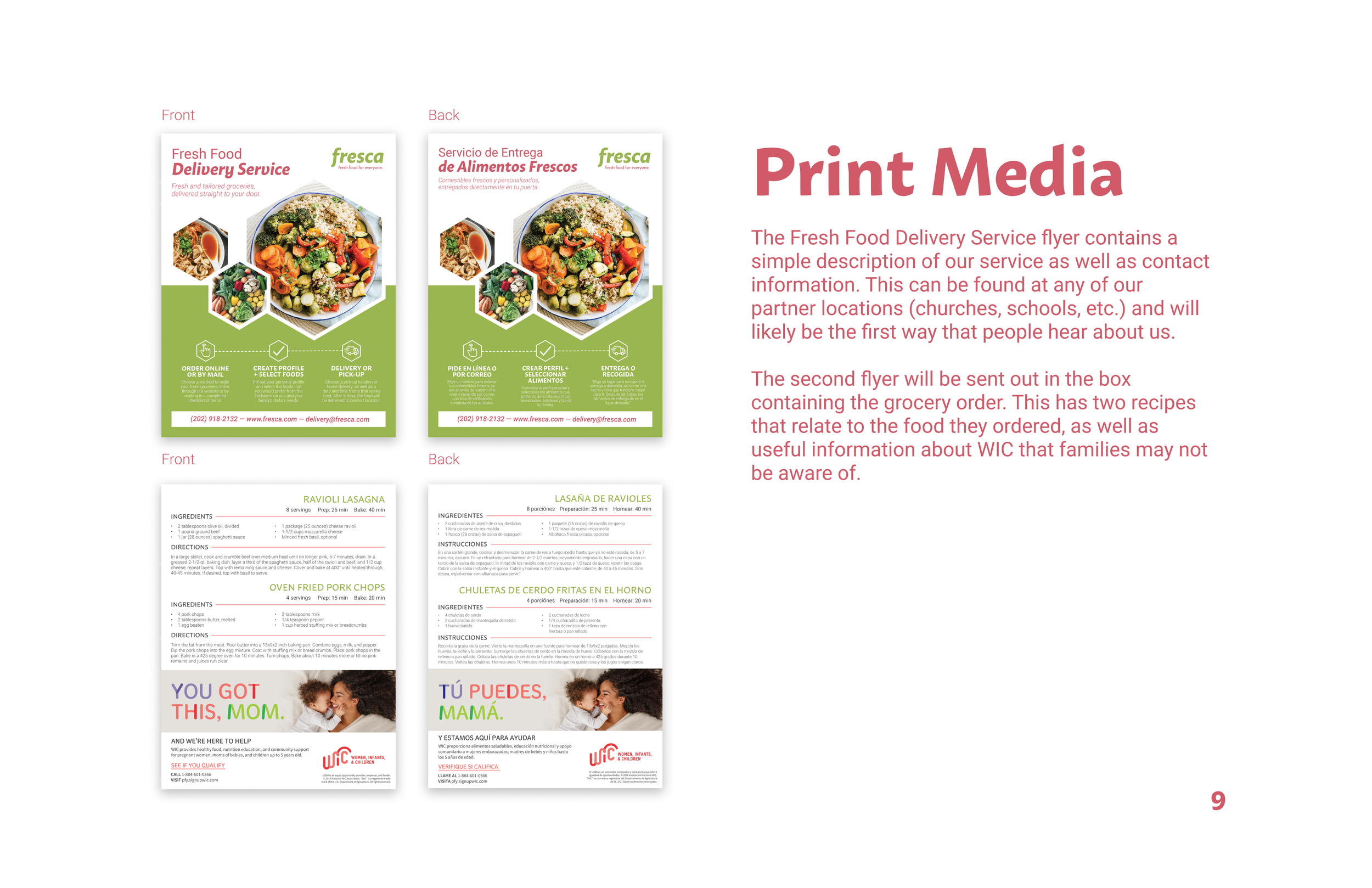
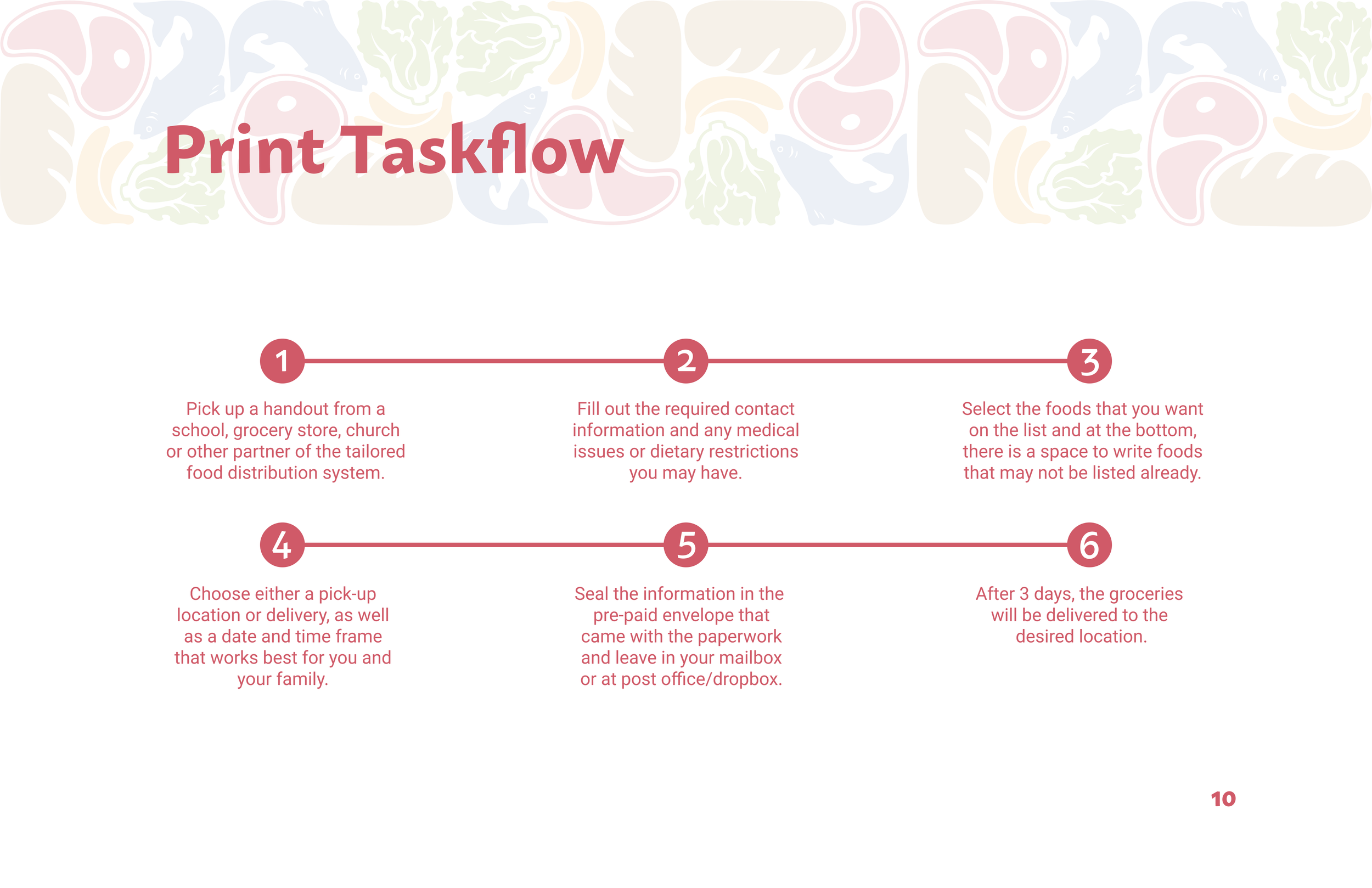
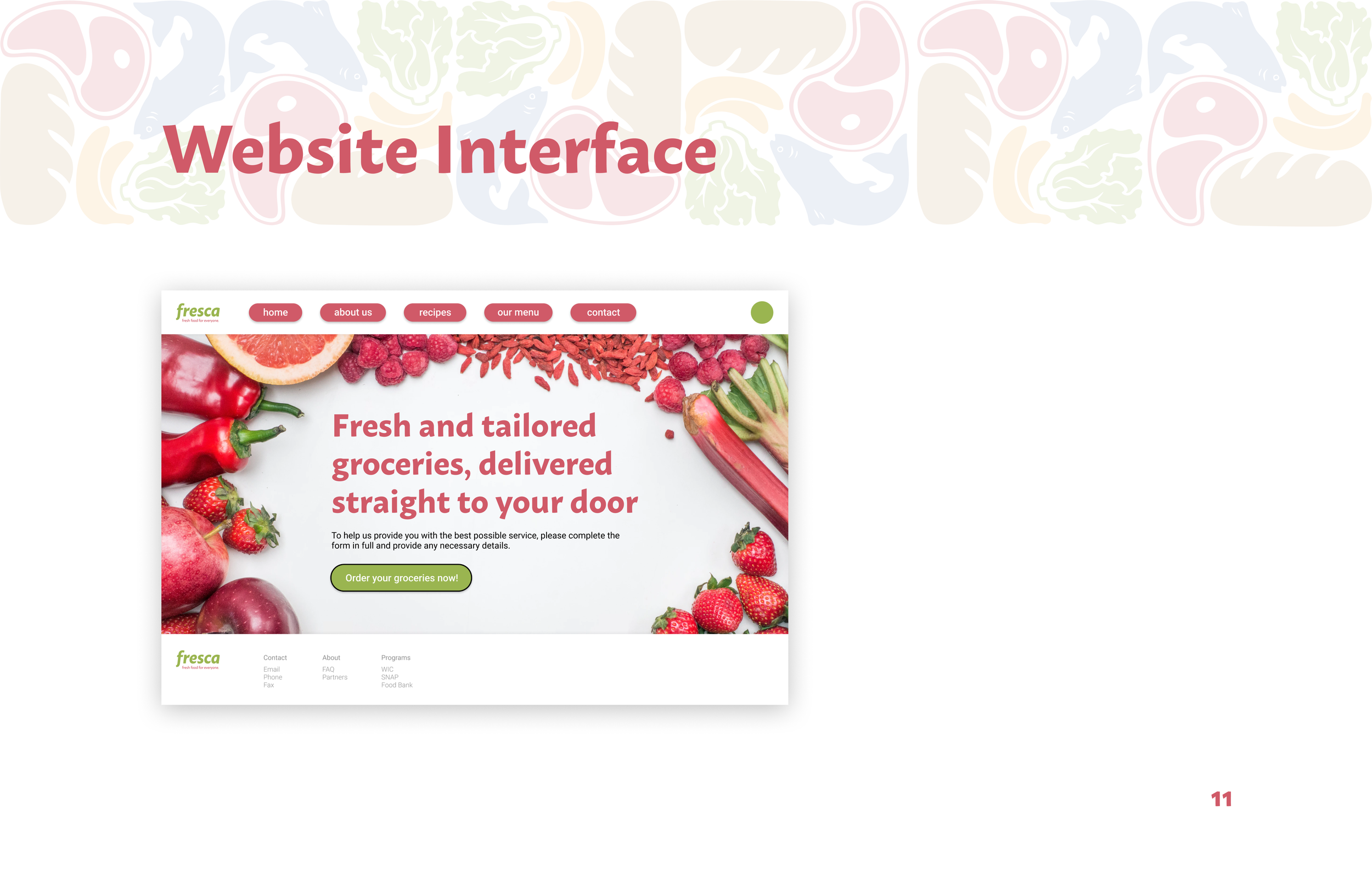
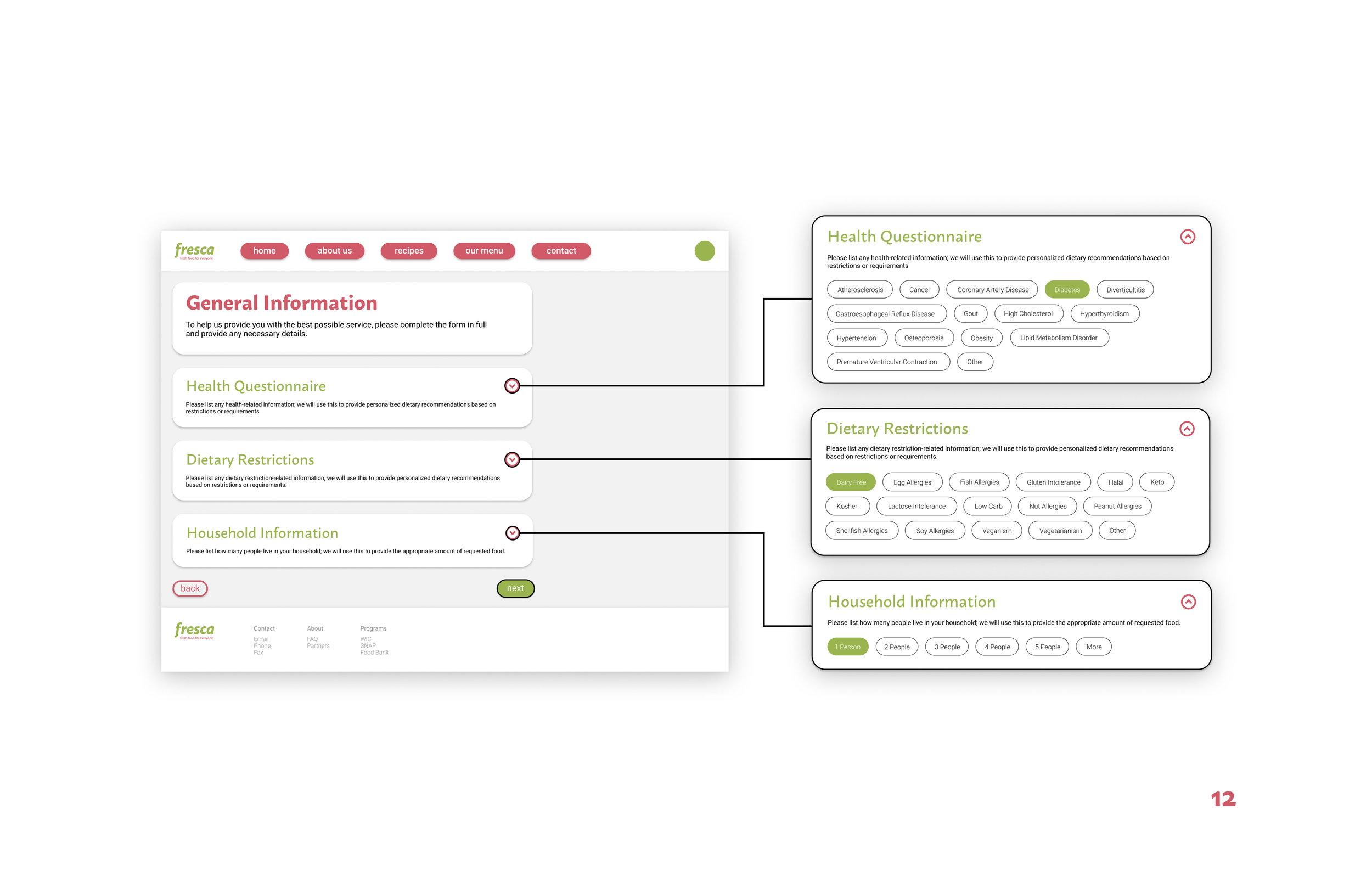
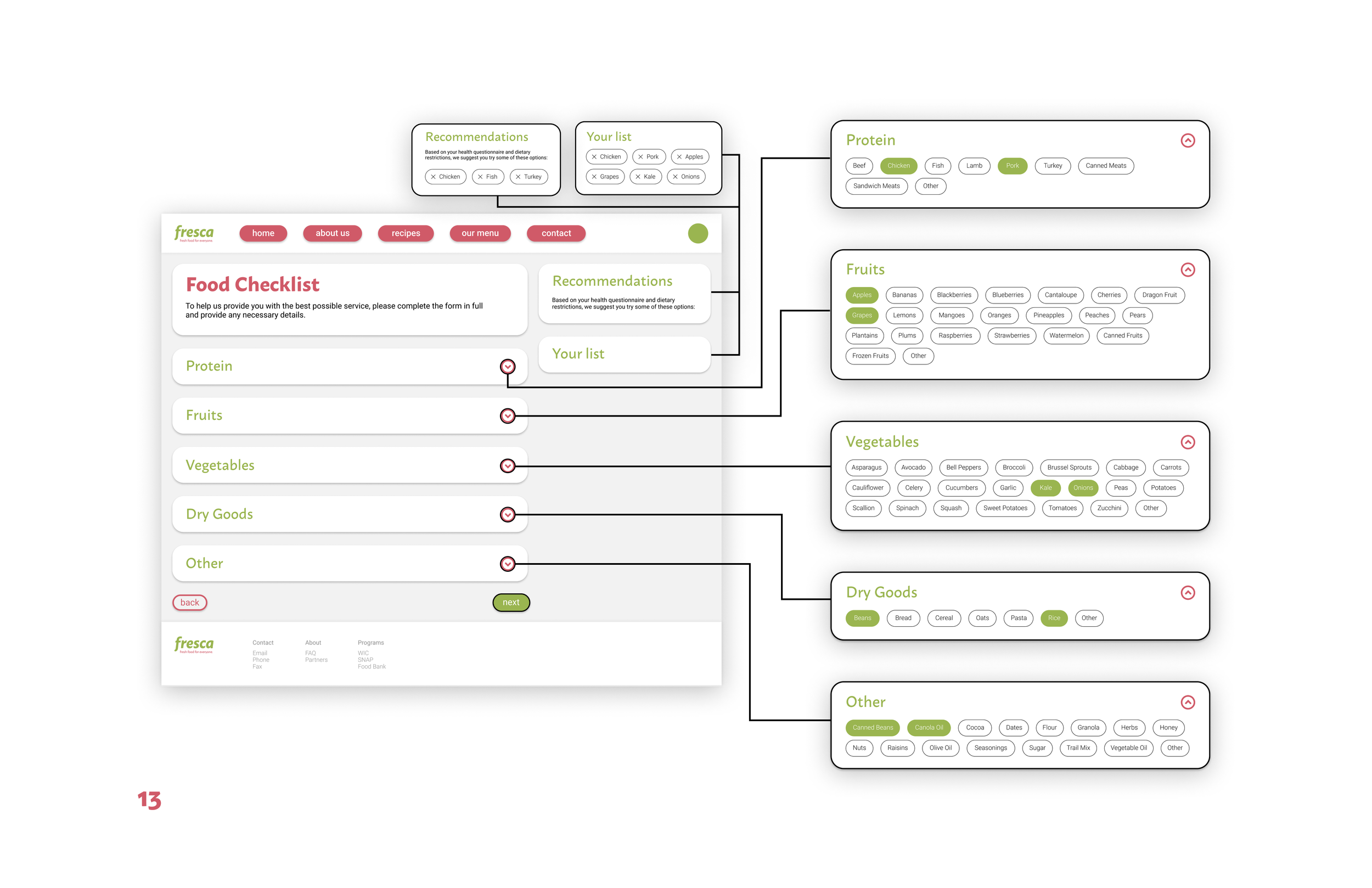
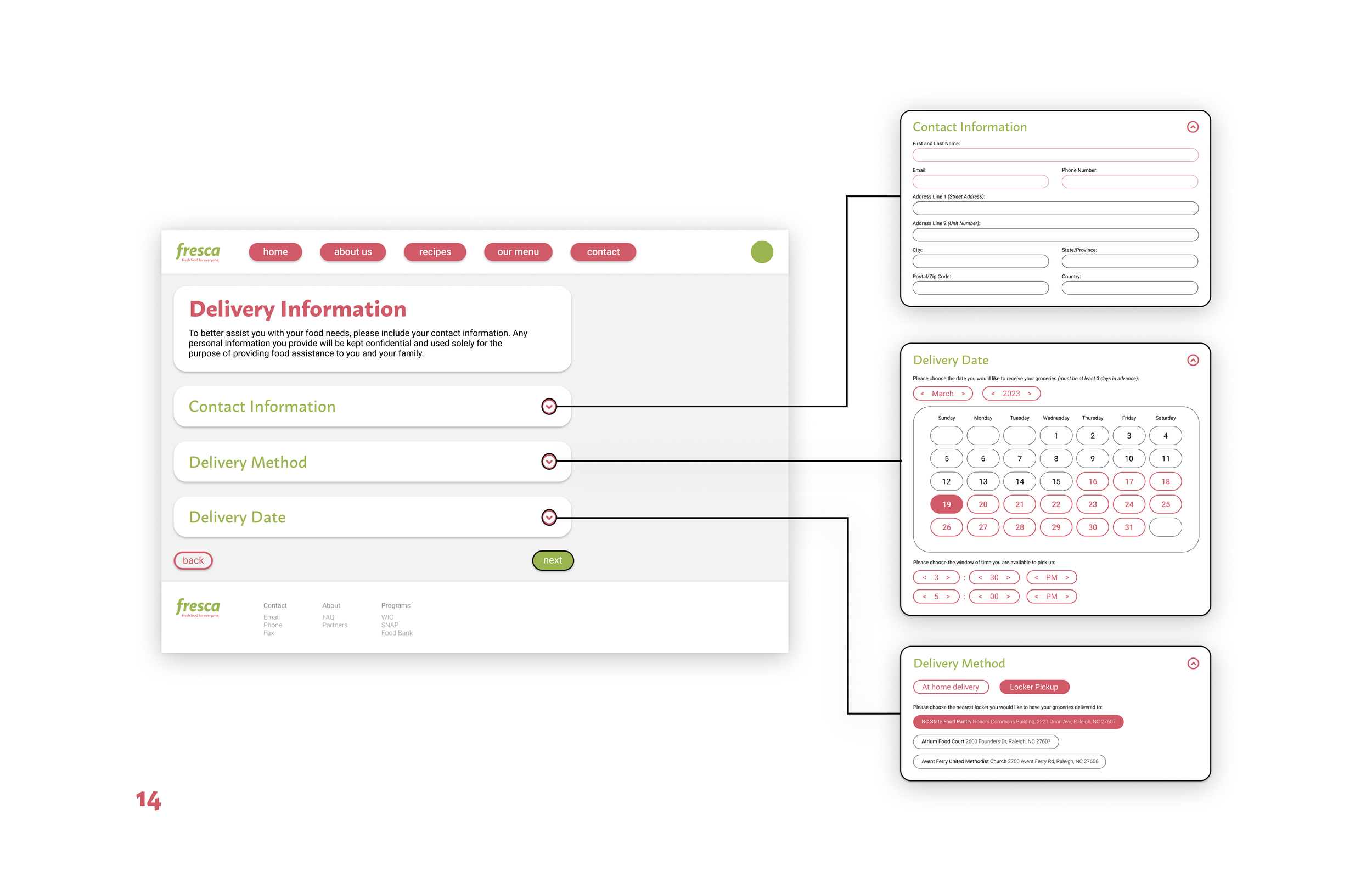
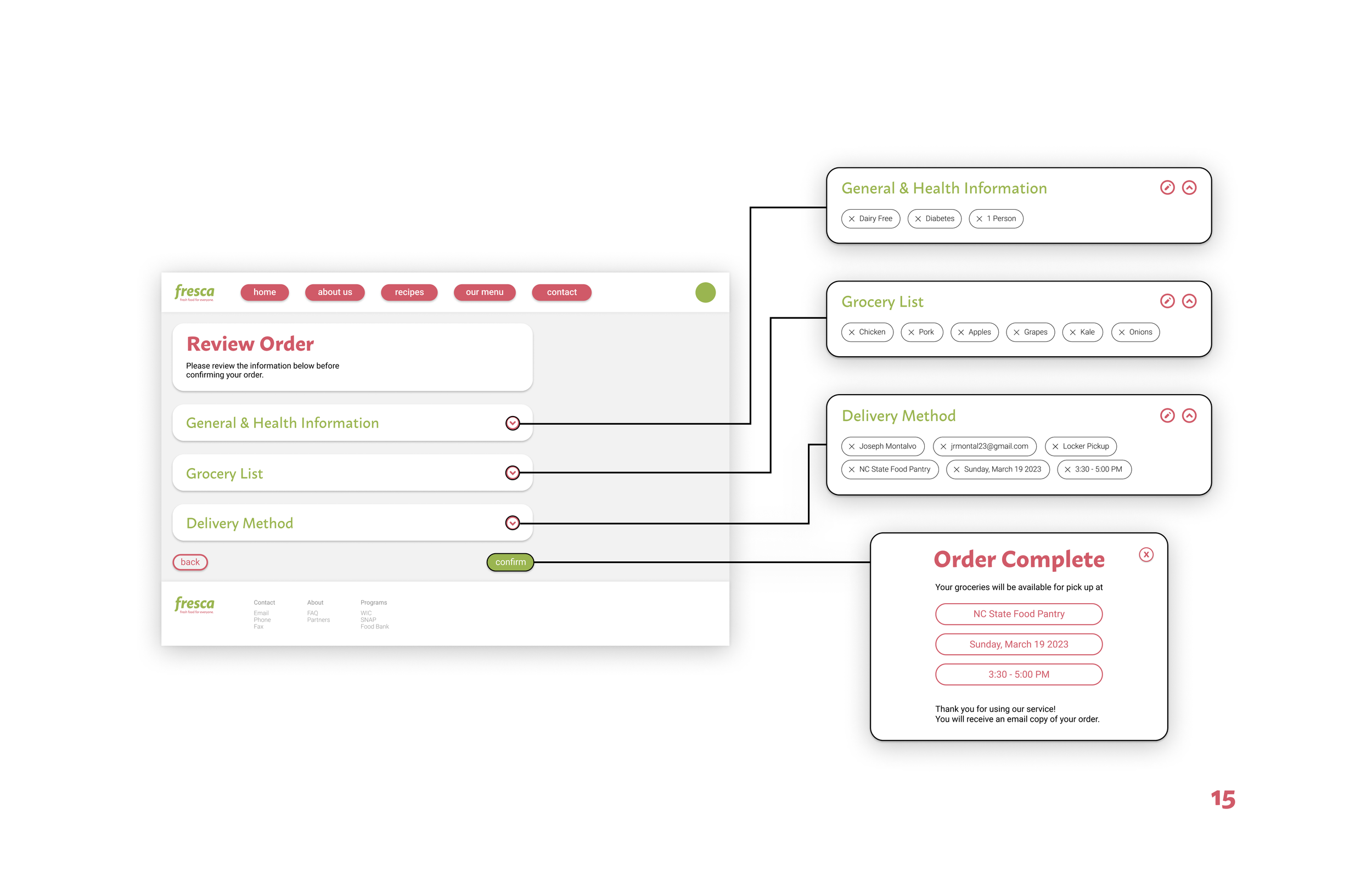
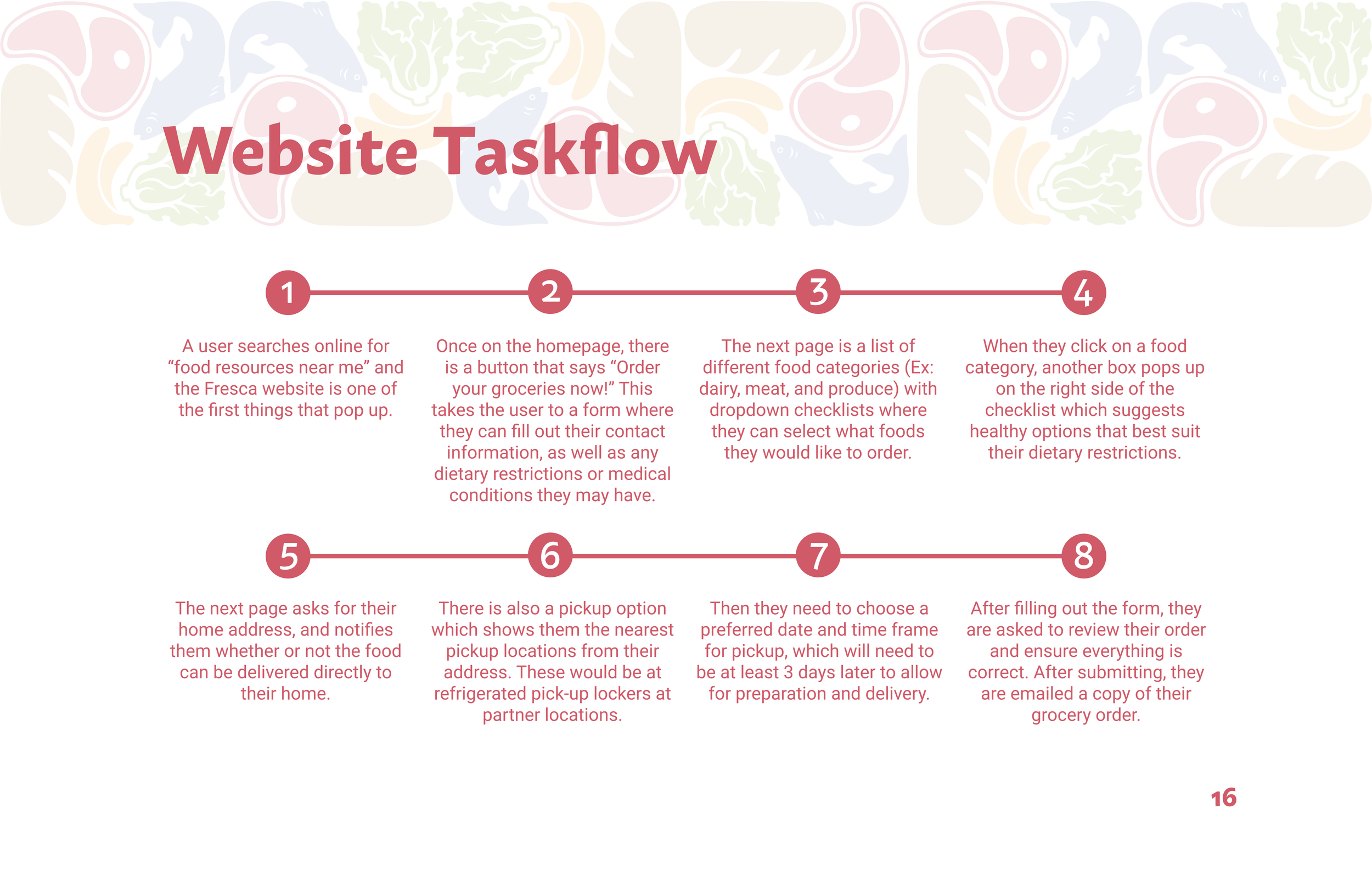
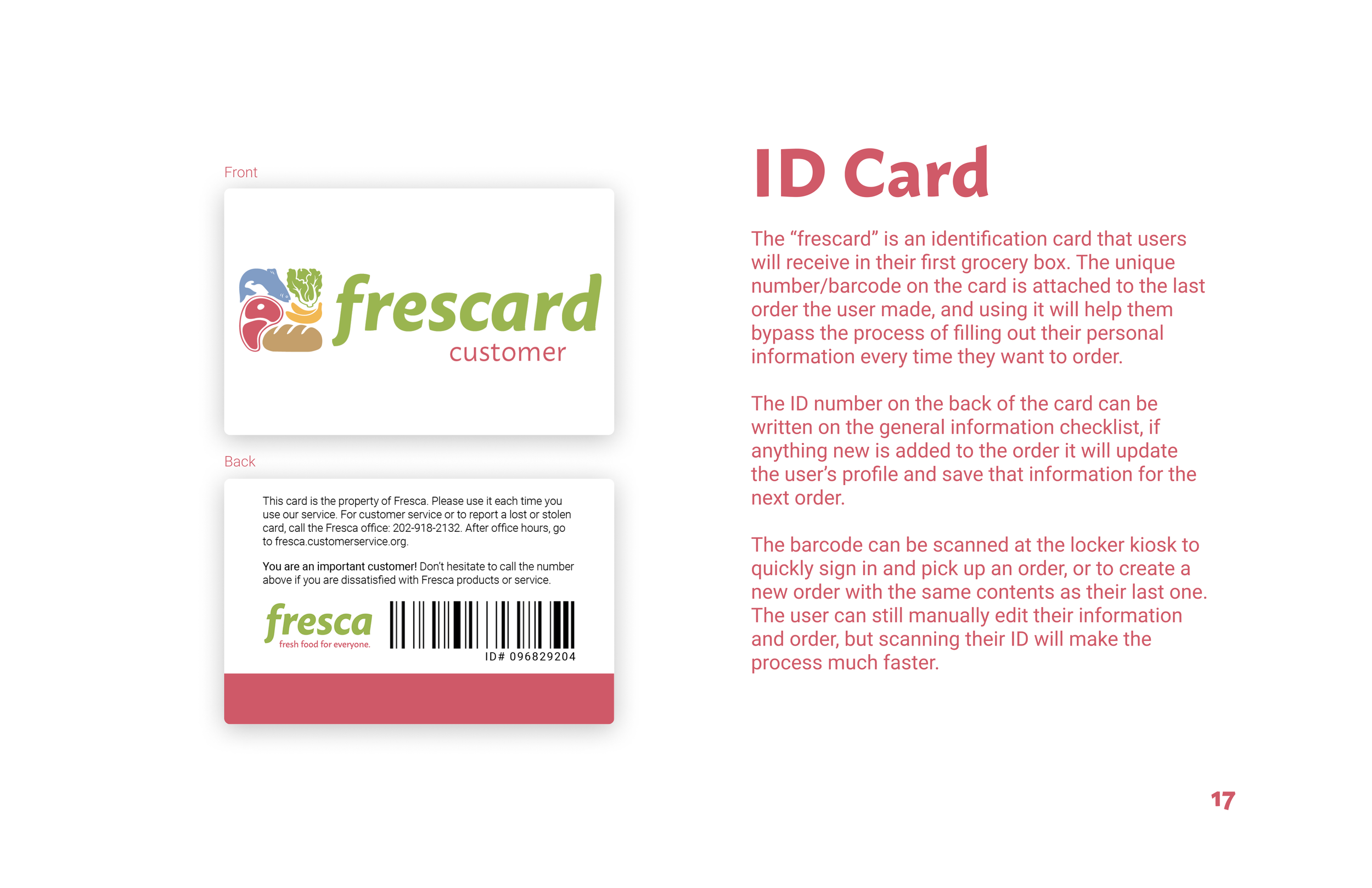
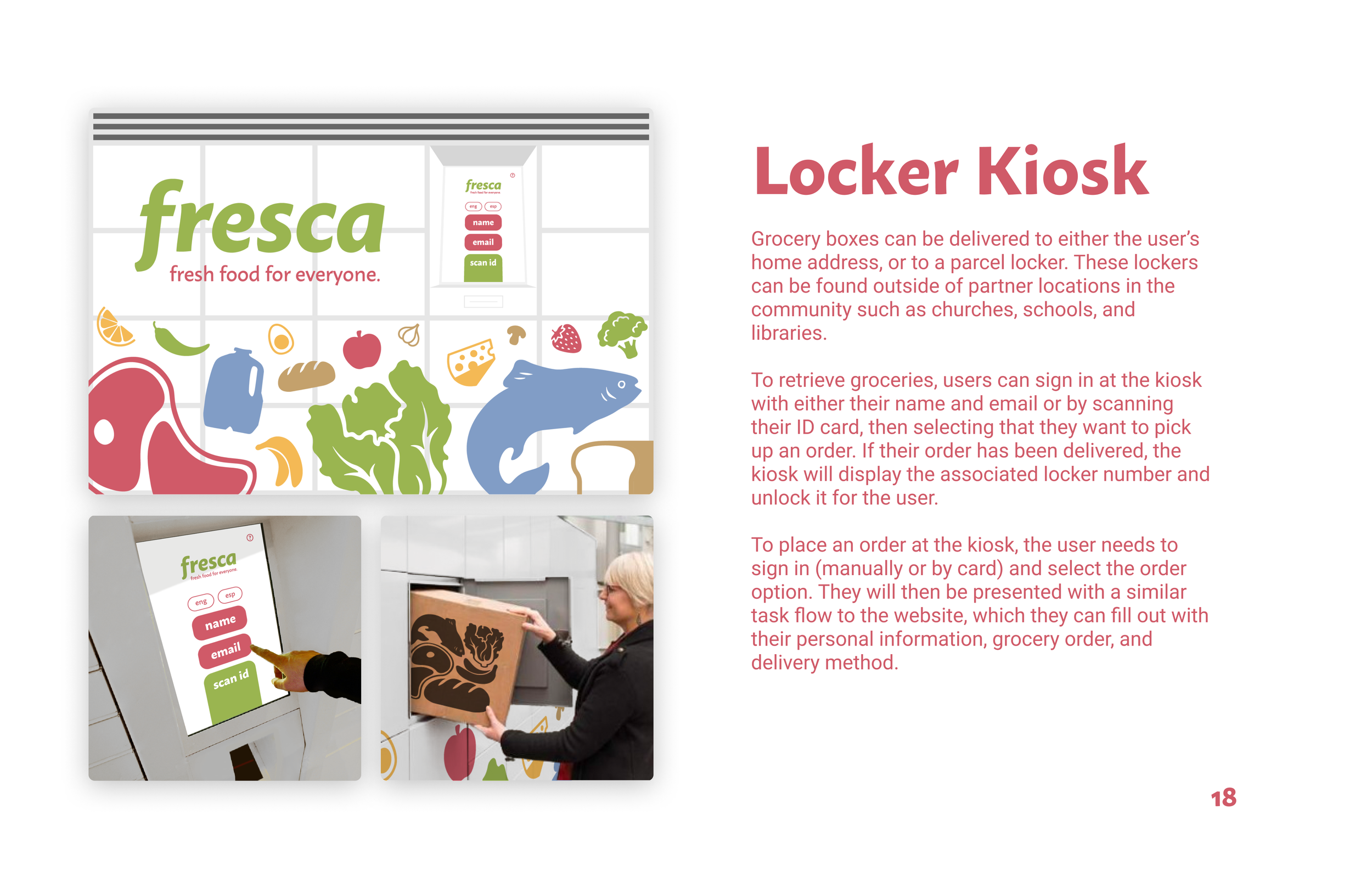
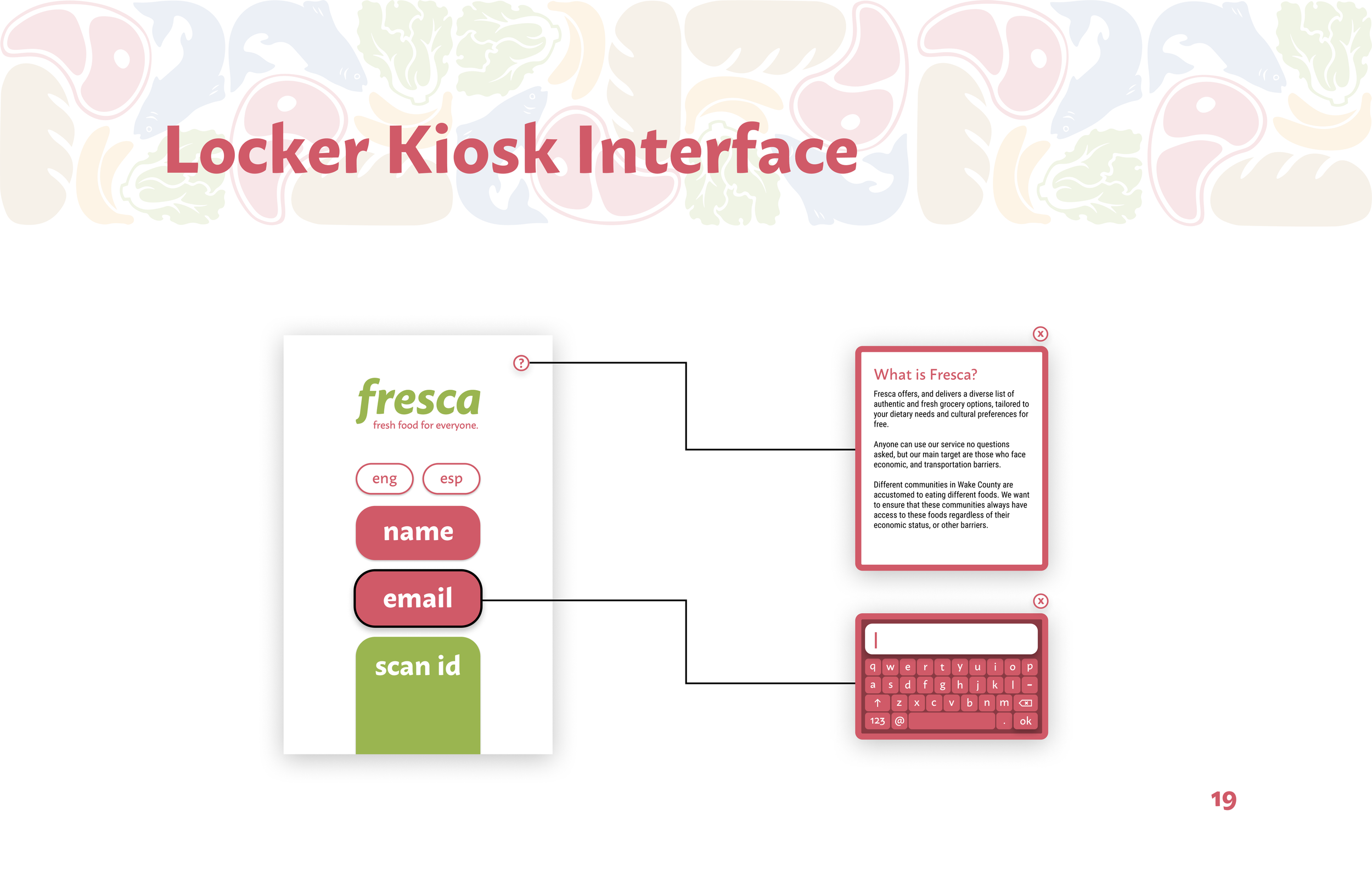
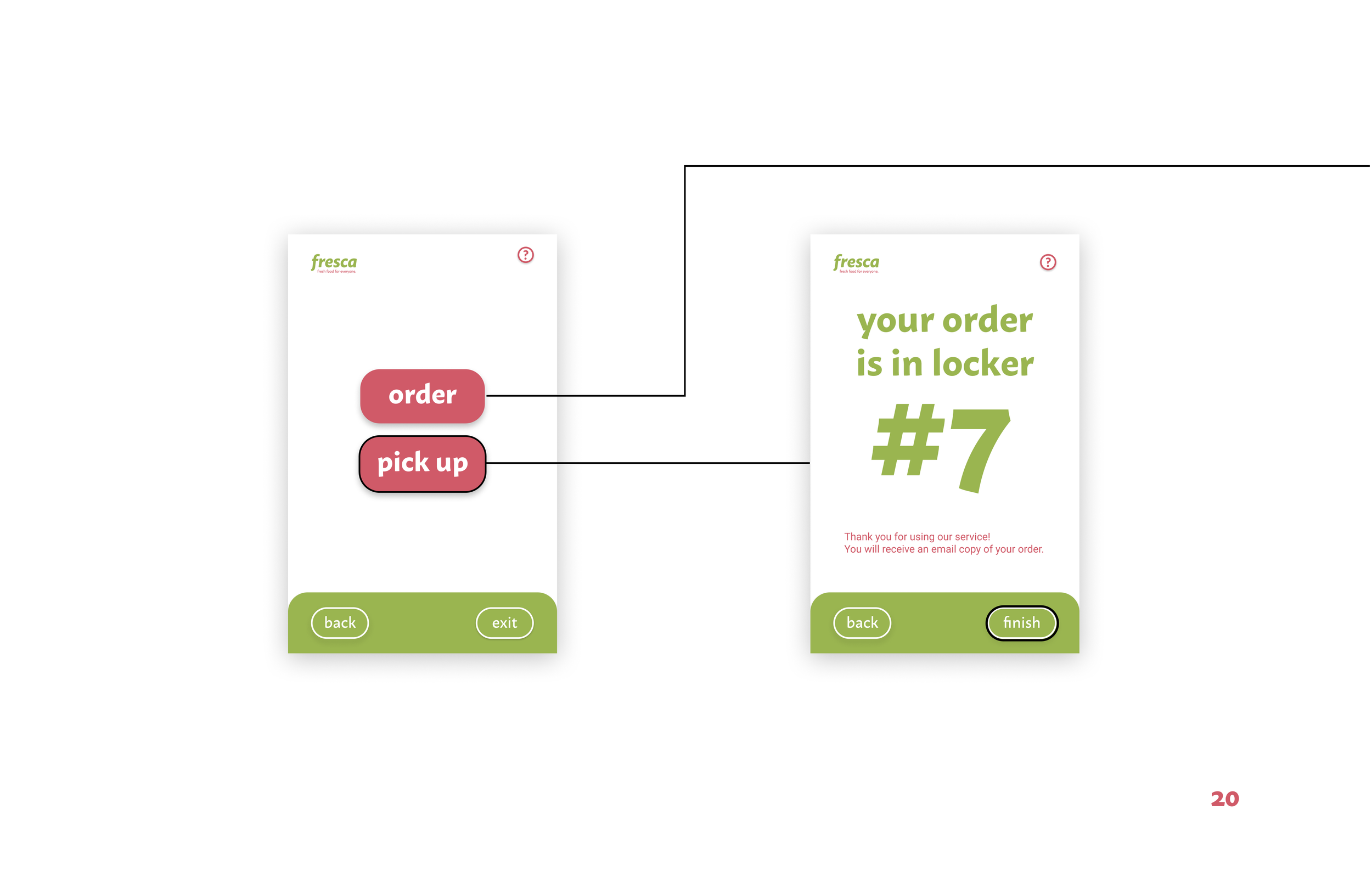
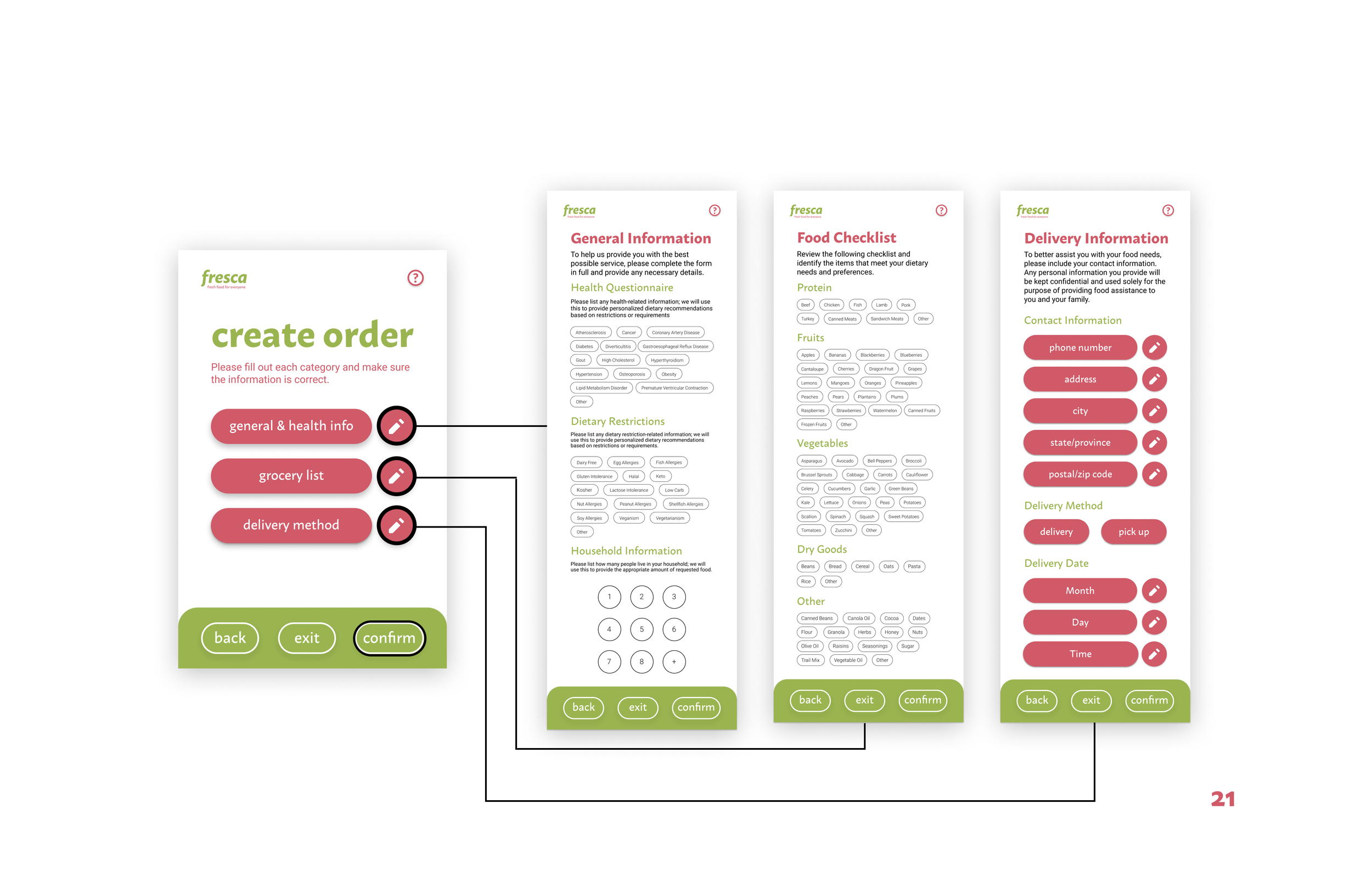
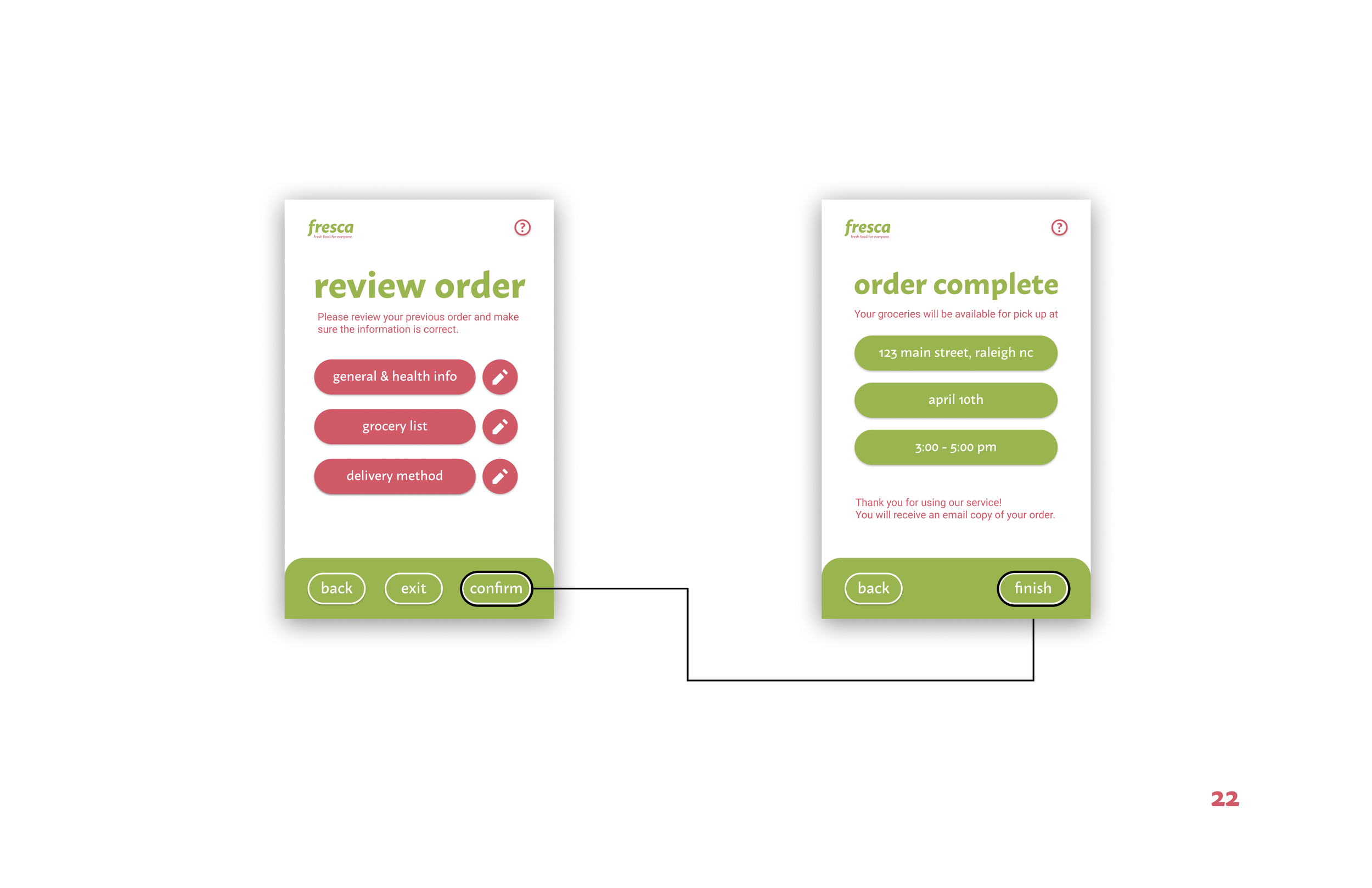
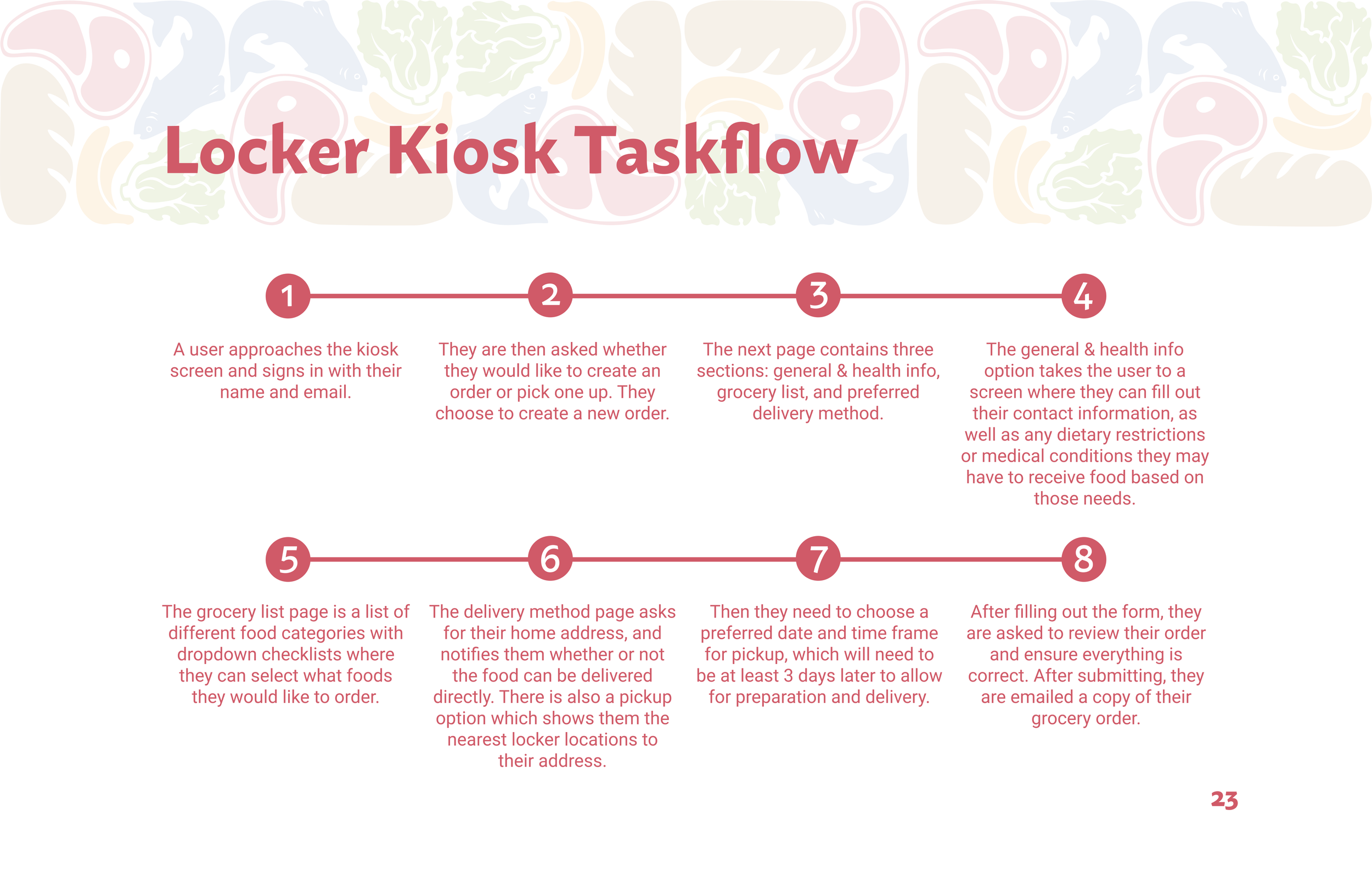
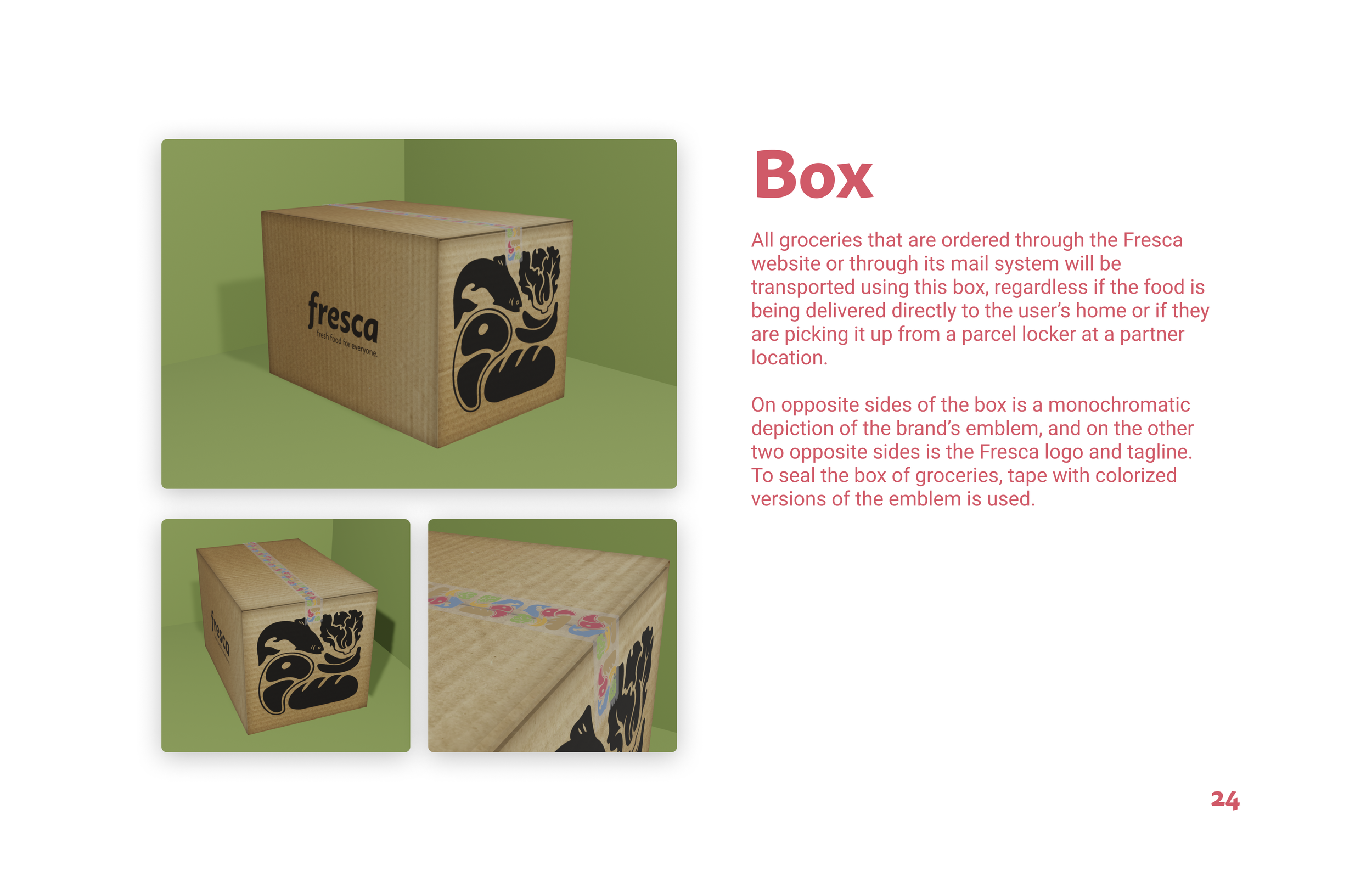
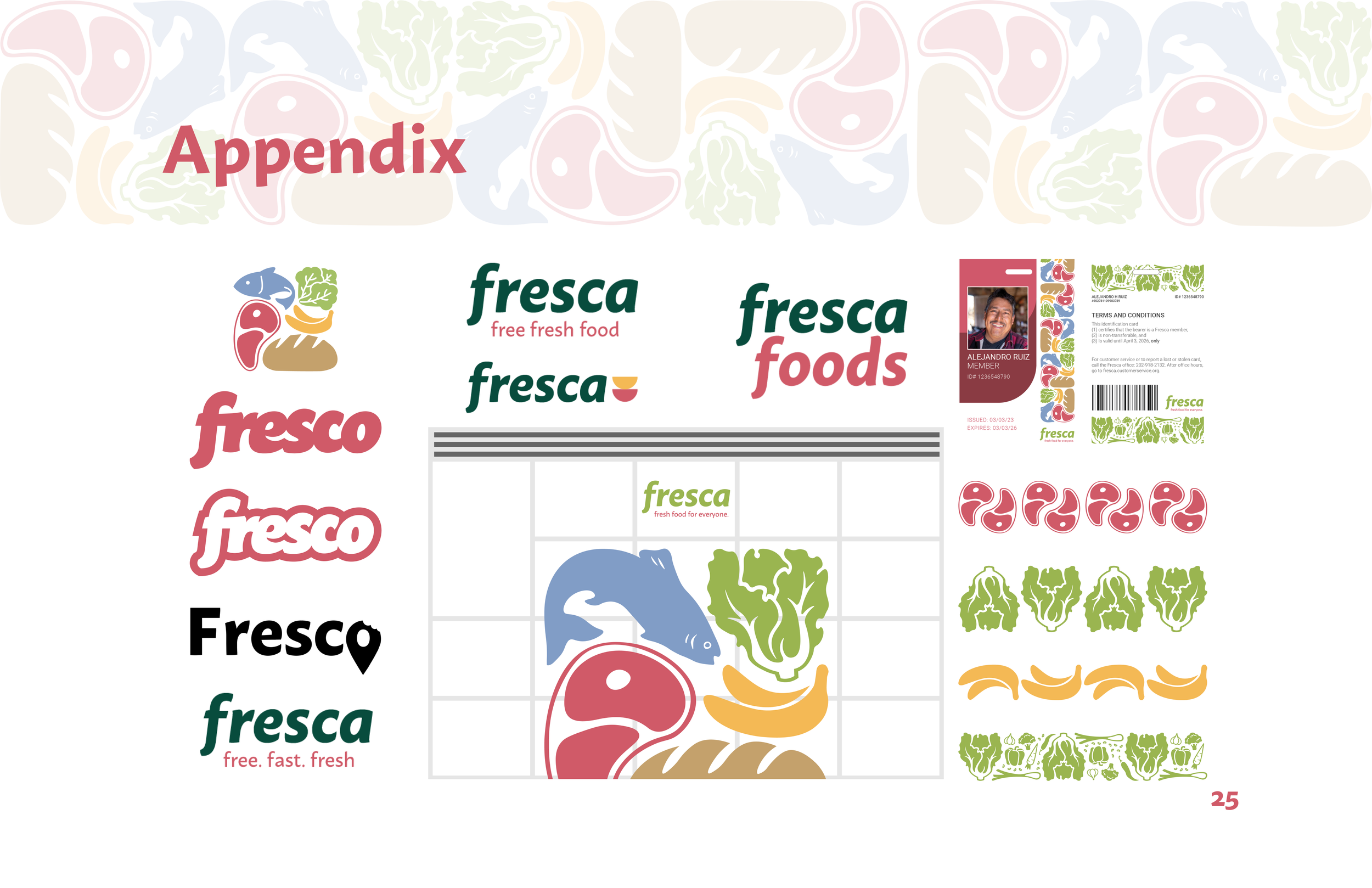
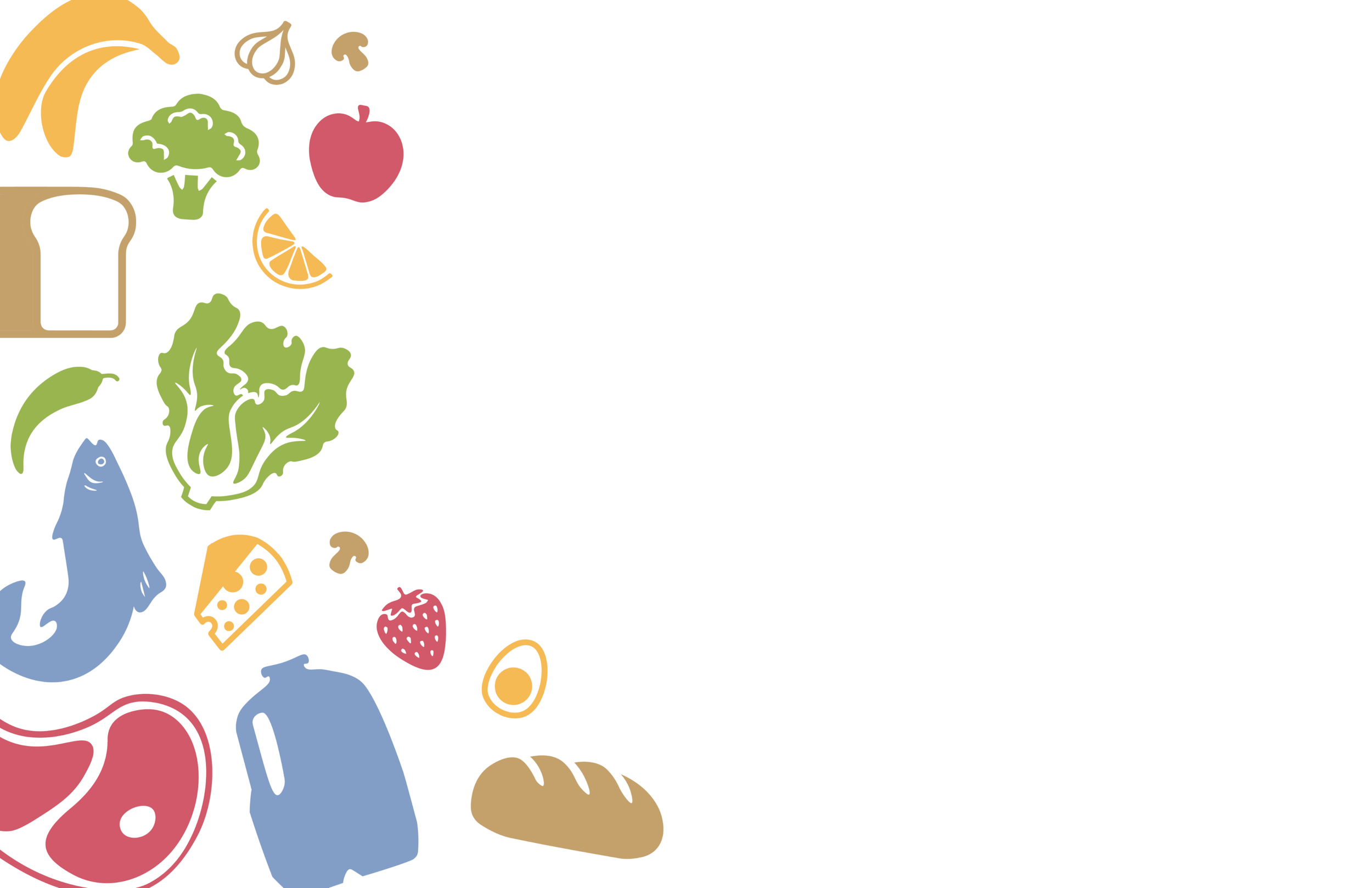
Website
Fresca also has a website where users can access information and order food, offering an alternative to the flyers and mail-in checklists. The website consolidates all key details, making it easy to navigate. To avoid overwhelming users, it features drop-down menus that hide and expand checklists as needed, ensuring a clean, user-friendly experience while still allowing users to enter all necessary information.
Locker Kiosk
Grocery boxes can be delivered to the user's home or to a parcel locker located at community partner sites like churches, schools, and libraries. To retrieve groceries, users sign in at a kiosk with their name and email or by scanning their ID card. The kiosk will display and unlock the locker if their order is available.
The Frescard is an ID that users will receive in their first grocery box. The unique number/barcode on the card is attached to the last order the user made, and using it will help them bypass the process of filling out their personal information every time they want to order. The ID number on the back of the card can be written on
ID Card
the general information checklist, and it will save that information for the next order. The barcode can be scanned at the locker kiosk to quickly sign in and pick up an order, or to create a new order with the same contents as their last one. The user can still manually edit their information and order, but scanning their ID will make the process much faster.
All groceries ordered through the Fresca are delivered in this box, whether to the user’s home or a parcel locker. Two sides display a black version of the brand icon, while the other two show the Fresca logo and tagline. The box is sealed with tape featuring a colored, tiled pattern of the icon.
Packaging
To place an order at the kiosk, the user needs to sign in (either manually or by card) and select the order option. They will then be presented with a similar task flow to the website, where they can fill out with their personal information, grocery order, and preferred delivery method.
To retrieve groceries, users can sign in at the kiosk with either their name and email or by scanning their ID card, then selecting that they want to pick up an order. If their order has been delivered, the kiosk will display the locker number and unlock it for the user.
Parcel Locker
Kiosk Interface
Print Media
Print media is essential to Fresca’s outreach. We offer a mail-in checklist for grocery orders in both Spanish and English and distribute informational flyers in public spaces and schools. This approach ensures that our service effectively reaches a broad audience and helps everyone access and use our services.
Mail-in Checklist
These two pages will be provided with a prepaid envelope and, after being filled out, would be sent back to Fresca to complete the order. The general information page asks about diet related medical conditions, dietary restrictions, and contact information. If a user has previously filled this out and opted to receive an ID card, they can simply write their ID number in the provided space.
The food checklist contains a list of food options that the user can order, since space is limited there are blanks that can be filled in as well. This allows people to write in cultural foods that may not be included in the list, or may be hard to find at the grocery. Having people write down what they want will also help the Food Bank know what they should be prioritizing when buying food.
The Fresh Food Delivery Service flyer contains a simple description of our service as well as contact information. This can be found at any of our partner locations (churches, schools, etc.) and will likely be the first way that people hear about us.
Flyers
The second flyer will be included in the box with the grocery order. It features two recipes that can be made with the food they ordered, along with useful information about the WIC program.
Branding
Fresca’s branding is inspired by major grocery stores to ensure a familiar and accessible look. By using illustration and bold colors, it aims to make the service feel reliable and easy to navigate, creating a comfortable experience for users.
Logo
The Fresca logo features a few healthy grocery basics arranged in a square or box shape, representing the food packed in our delivery box. The logo comes in several color variations that can be interchanged as needed, allowing for flexibility while maintaining a consistent brand identity.
We chose a color palette of red, blue, yellow, brown, and green for the Fresca branding to keep it simple and relatable. These colors are commonly associated with basic food products—red for meat, blue for dairy or fish, yellow for fruit, brown for grains, and green for vegetables. This palette not only reflects the variety of healthy foods we deliver but also ensures that the branding is visually appealing and easy to recognize.
Colors
The typography for Fresca uses Macho as the title font, giving the brand a bold and approachable look, while Roboto is used for the body text to ensure clear legibility across all platforms.
Typography
Research
Our research process involved investigating various aspects of food insecurity, with my focus on food swamps and deserts. After conducting in-depth research, our group interviewed Gideon Adams, Vice President for Community Health and Engagement at the Food Bank of Central & Eastern NC, and Sydney Klein, Wake County Food Security Program Manager. Their insights helped us refine our findings and understand the practical implications of our research.
Food Swamps and Deserts
I researched how the abundance of unhealthy food options in certain areas, called food swamps, negatively impacts nutrition security— particularly in lower-income neighborhoods. While food deserts, which lack any food options, are often discussed, food swamps are becoming as just as, if not more significant of a threat due to the accessibility of unhealthy choices.
This issue is compounded by the correlation between food swamps and rising rates of obesity and chronic illnesses like type 2 diabetes. I found that merely increasing the number of healthy food options in these areas is insufficient. Effective solutions must involve revising zoning policies, incentivizing healthier choices, and reducing the prevalence of fast food outlets.
In our interview with Gideon Adams, Vice President for Community Health and Engagement at the Food Bank of Central & Eastern NC, he discussed his role in community outreach and the challenges of sourcing healthy food. He noted that many donations are unhealthy, so the Food Bank partners with local farmers to obtain fresh produce. Adams also emphasized their focus on serving the large Spanish-speaking population that utilizes the Food Bank, and his efforts to ensure that their services are accessible and culturally relevant.
Stakeholder Interviews
Sydney Klein, Wake County Food Security Program Manager, outlined the SNAP-Ed program and nutrition classes aimed at improving local food choices. Klein also highlighted food deserts in Southeast Raleigh and Eastern Wake County, and discussed how gentrification complicates efforts to address food insecurity by changing community dynamics and needs.
Personas
Understanding detailed user profiles helps us grasp the diverse challenges individuals face, such as limited transportation, fluctuating incomes, and specific dietary needs. By exploring these scenarios, we can better tailor our services to address issues like convenient shopping options, accessibility, and accommodating dietary restrictions, ensuring that our solutions actually meet the needs of our users.
Joseph is a 20-year-old NC State undergraduate living in Owen Residence Hall, relies on public transport to get around since he doesn't own a car. His goal is to visit the Hispanic grocery store across town for his weekly groceries, although the journey is challenging due to the reliance on the bus.
Alejandro is a 46-year-old construction worker living with his wife and three kids in Eastern Wake County, needs to find groceries that fit his family's diet and align with his schedule. With only one car, which he uses for work, his wife lacks access to transportation during the day for grocery shopping. Alejandro’s income fluctuates month to month, and his high cholesterol requires him to avoid certain foods, making it essential for him to find convenient and suitable grocery options.




































